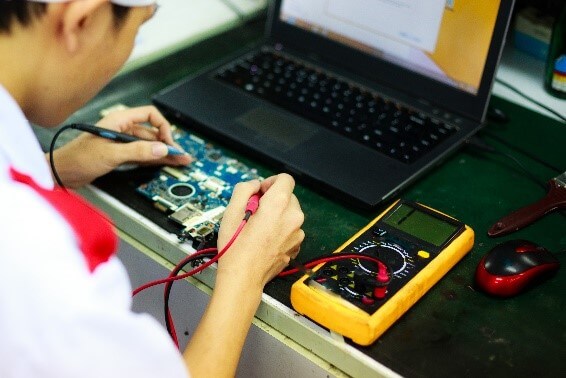 The COVID-19 pandemic has suddenly transformed learning and teaching around the world. In the People’s Republic of China, for example, at least 260 million students from elementary school to high school enrolled in online platforms during the epidemic.
The COVID-19 pandemic has suddenly transformed learning and teaching around the world. In the People’s Republic of China, for example, at least 260 million students from elementary school to high school enrolled in online platforms during the epidemic.
This period highlighted a series of critical factors on which it is crucial to reflect:
Connection
A prerequisite for moving from physical classrooms to online learning is a good home Internet connection. Connectivity is much better in urban areas than in rural areas (which rely on wireless data connections from a cell phone in the absence of a landline connection).
Accessibility
To make online learning accessible even for the less advantaged areas, the Chinese Ministry of Industry and Information Technology has urged national telecommunications companies to improve network coverage and offer discounted data plans to students of low-income families. Also, it has taken steps to strengthen TV networks with educational content.
Devices
Often online learning takes several hours a day, which is why users prefer a desktop or laptop computer over mobile phones or mini-pads due to the limited screen size and the difficulty in simultaneously viewing teachers, contents and classmates. This also led to an increase in computer sales.
Mode
The combination of recorded lessons and live streaming allowed students to preview and study recorded videos and online materials independently. They can then participate in live streaming lessons by preparing questions better and interacting with their teachers and classmates.
Digital literacy
Digital literacy skills have become fundamental for teachers. Most of young teachers quickly learn how to manage live streaming lessons. However, some older teachers face significant difficulties, making their lack of digital literacy a severe obstacle to effective teaching.
Interaction
The real-time interaction offered by streaming platforms encourages students to participate, ask questions, engage and share their opinions more comfortably.
But teachers also struggle with the technical limitations of online platforms, such as the inconvenience of writing on a blackboard with a computer mouse.
Online vs Offline
Most of the students are more digitally trained and comfortable with online learning (according to a survey, 83% was satisfactory, and 47% very satisfactory). However, most students expressed strong wishes to return to the old mode. Interactions between students, teachers and facilities in a traditional classroom environment cannot be totally replaced by online learning.
Conclusions
The increase in online learning in the People’s Republic of China during the coronavirus epidemic highlights the importance of infrastructure (networks and devices), platforms (stability, interactions and improvement capacity) and preparation of teachers, students and parents. But this does not make online learning a substitute for face-to-face education. Mixed schooling using online and offline learning through public-private partnerships could become the new norm, even after the pandemic.
source: https://bit.ly/2YSYxRI






 the aim to design a robot that can offer help to a maintenance technician in a pro-active manner. The project researchers and developers see this robot as a second pair of hands that can assist the technician when he/she is in need of help. To operate within environments designed primarily for industrial efficiency, but centered around a human workforce, a robot should possess a rich repertoire of human-like skills, and probably a humanoid or human-like form, specifically in order to use the same methods of access.
the aim to design a robot that can offer help to a maintenance technician in a pro-active manner. The project researchers and developers see this robot as a second pair of hands that can assist the technician when he/she is in need of help. To operate within environments designed primarily for industrial efficiency, but centered around a human workforce, a robot should possess a rich repertoire of human-like skills, and probably a humanoid or human-like form, specifically in order to use the same methods of access.

 workers to review ways of collaborating with their companies, and managers are finding that, after an adaptation period, this could be confirmed in the long run.
workers to review ways of collaborating with their companies, and managers are finding that, after an adaptation period, this could be confirmed in the long run.





